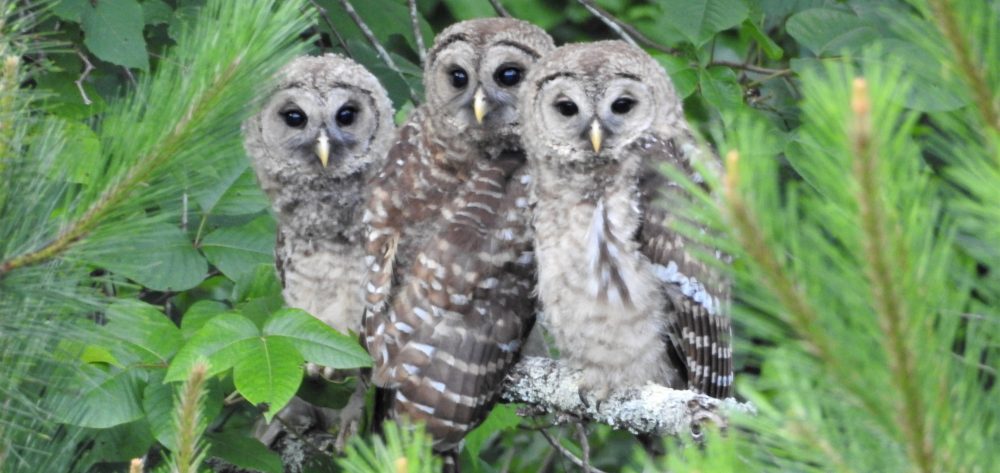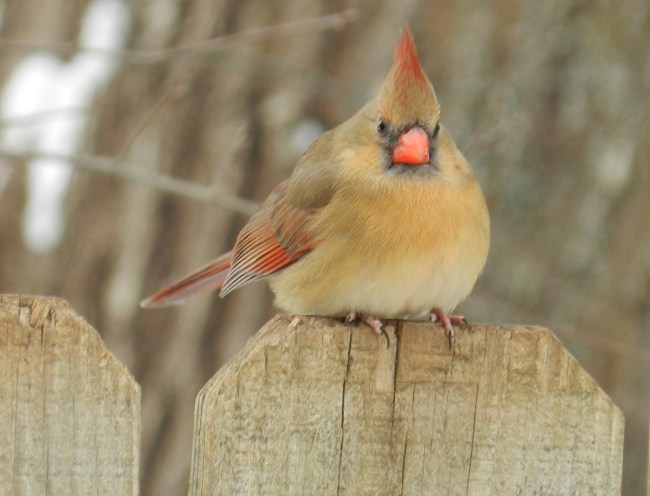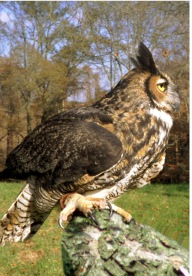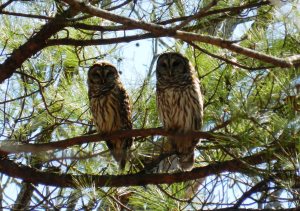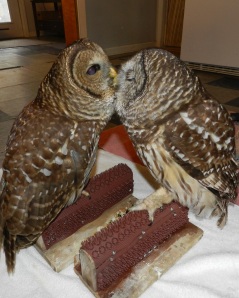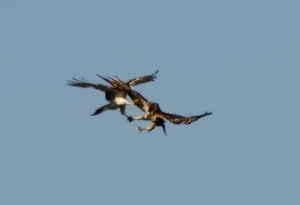Atlanta doesn’t see a lot of snowfall, but when it does, it’s a major event. A recent snow here, “Snowjam 2014,” made national news as a panicked city shut down government, businesses, and schools, leading to paralyzing traffic jams that stranded people on roadsides and forced them to camp out in gas stations and grocery stores. Yesterday we had a second snowfall (mixed with sleet and freezing rain) that shut down much of the city. Having grown up in New Jersey and Vermont, I find the frenzy and lack of preparedness for snow here to be somewhat unfathomable, but I have enjoyed the excuse to slow down, admire the change of scenery, spend time with my children, and hunker down in warm pajamas. Although the weather this week was dreadful with driving sleet and howling wind, it made for some magical scenery, which we enjoyed from our warm house while making homemade soup and coffee cake.
One of the nicest things about my snow day is that it afforded me the luxury of watching my bird feeders throughout the day–and were they ever busy! (I’m only mildly embarrassed to admit that I stayed in my pajamas all day long, though I did go outside a few times to refill bird feeders.) Even amid driving sleet and icy wind, the birds stayed active. I am always amazed how such small creatures, warm-blooded like ourselves, survive in such wretched weather. One of the ways they do this is by keeping their bellies full. Many species of birds put on an insulating and energy-giving layer of fat in the winter (much like some of us do!), so they spend the majority of their day seeking out fatty food sources—all the more reason to keep those feeders full during bitter cold weather. You’ve probably witnessed another strategy birds use to survive the cold, which is by puffing up into the shape of a little round ball to trap insulating heat close to their bodies. Birds also fight the cold by staying out of the elements, finding cover in dense foliage or cavities, and some species huddle together to share warmth. Some of the smallest and hardiest birds, like chickadees, drop their body temperature more than 20 degrees Fahrenheit at night to save energy. How lucky we are to be able to warm up with a hot cup of cocoa or by turning up our thermostats! Appropriately, my family ended the day by curling up on the couch with blankets and watching the PBS Nature “DUCKumentary.”.
This morning, sun shining, I woke to sound of a steady drip of ice melting from trees and a thundering crash of snow sliding from the roof. I dressed and readied myself quickly to get outside to hike in the woods at our local park before the magical blanket of snow was gone. My two children, ages 10 and 12, having had their fill of television and video games during the sleet and snow, willingly pulled on their boots to join me. Watching our step as we crunched through the wet snow and keeping our heads down to avoid pelting snow and ice melting from the trees made bird-watching unfavorable. Birdsong filled the air, however, and we were lucky to spot the resident pair of Barred Owls roosting in their favorite pine tree. In the wetlands by the lake, dozens of sparrows were scratching in the mud looking for good things to eat, and a Belted Kingfisher zipped by, sounding his loud, rattling call. What struck me most on this morning’s walk, however, was not the birds, but the trees – their starkness so beautifully accentuated by white snow and blue sky.
American Beech trees were particularly dazzling with coppery leaves fluttering in the breeze and adding a flash of color to the landscape. Young beech trees and many species of oak hold their leaves through the winter, a trait called marescence that may help them weather the hardships of the season. One possible advantage of marescent leaves–defined as “withering but not falling off”–may be that they help the tree withstand stress from cold temperatures and improve water balance. Holding leaves through winter may also provide frost protection for new buds and twigs or deter animals from feeding on them (since dead, dry leaves are less nutritious and palatable). Another theory suggests that by dropping their leaves in spring, beech trees are delivering an organic mulch at the time when it is most needed by the growing parent tree. I like the suggestion of Michael Snyder, a Vermont forester, who suggests that marescence may be “helpful to trees living in dry, cold, deer-infested environments,” but that because all trees evolved from evergreens, it may also be a “sign that beech and oak are evolutionarily delayed, still on their way to becoming fully deciduous from their more evergreen past” (northernwoods.org). Whatever the reason, the beautiful golden hues the beech leaves added to our walk today was not overlooked.
We returned home with wet hats and cold feet. The kids settled in with a cup of cocoa, while I took a hot shower before putting my pajamas back on, pouring a second cup of coffee and sitting down to work. Though the cold lingers long this winter and snowy weather has kept us from our regular routines, what gifts Mother Nature constantly provides.
